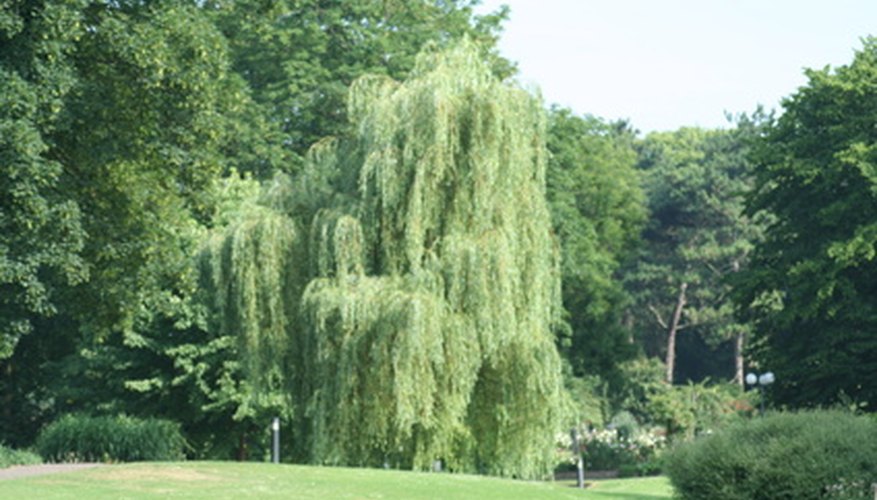Willow trees have been used to craft useful items for many centuries, and the sense of magic associated with willows can be traced to earlier times through their symbolism in mythology and legend. The weeping willow's flexible branches allow craftsmen versatility in weaving and shaping a wide variety of items. Many hobbies involve making items from weeping willow wood. Most of the projects are not difficult, and their raw materials are not hard to find because weeping willows grow in abundance in wet, boggy areas.
Baskets
Although the history of using weeping willow wood in wicker basket weaving can be traced back centuries, its popularity has recently seen somewhat of a comeback. The craft originally was used for practical purposes such as crafting beehives, lobster pots and a variety of containers. An example of an early willow wicker basket, dating to the sixth century, was found on an island off the coast of Scotland. Today, basket weaving is more of a hobby. Although wicker baskets are still sold, they usually are used to decorate homes in a rustic style because plastic alternatives are available to replace their original uses.
- Although the history of using weeping willow wood in wicker basket weaving can be traced back centuries, its popularity has recently seen somewhat of a comeback.
Sculptures
Weeping willow stems are versatile and simple to bend. This means that they can be shaped and woven easily into 3-D objects such as animals and obelisks. These sculptures can be used to decorate the home or garden. Living weeping willow rods also can be planted into the ground in order to craft live sculptures for decorative or practical purposes. Examples of living willow sculptures include igloos, tunnels, arbors and living fences.
- Weeping willow stems are versatile and simple to bend.
- Living weeping willow rods also can be planted into the ground in order to craft live sculptures for decorative or practical purposes.
Traditional Flutes
The willow flute, or whistle, is a simple instrument that originated in Scandinavia and is made from a willow tube. Traditionally, the flute or whistle maker inserts a grooved plug into one end of the willow tube to form a mouthpiece. Although the willow flute has no finger holes, it can produce a wide range of notes. Willow flutes rely on moisture to produce notes and are made from the bark of green willow branches, which can be found in spring. The flute becomes unusable once the bark dries.
- The willow flute, or whistle, is a simple instrument that originated in Scandinavia and is made from a willow tube.
- Although the willow flute has no finger holes, it can produce a wide range of notes.
Furniture
Willow furniture has been made in the United States for the past two centuries. It adds an attractive, rustic appearance to a garden or patio area and is not too difficult to make. Weeping willow branches can be used to craft many types of furniture, including plant stands, chairs and tables. Weeping willow wood is a good medium to work with when making furniture because its branches can be bent to shape easily when they are wet, and the wood should be strong and last for many years when it is dry.
- Willow furniture has been made in the United States for the past two centuries.
- Weeping willow branches can be used to craft many types of furniture, including plant stands, chairs and tables.
